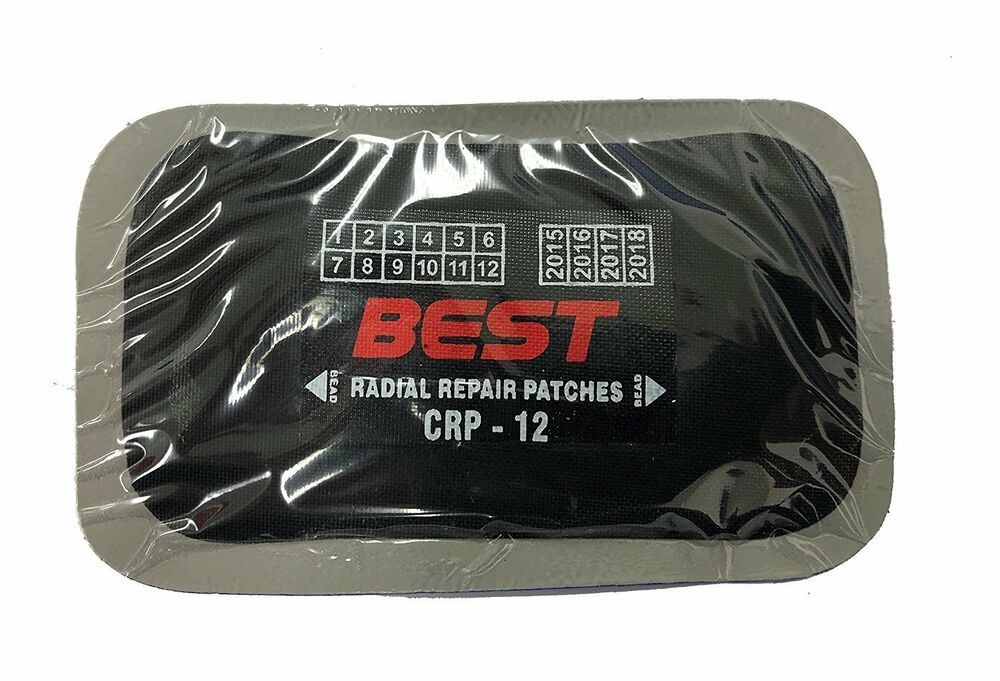Flat tires, blown-out tires, and shredded tires are all extremely common occurrences, especially when driving through areas that are under construction. Running over a nail can be very upsetting and may leave you wondering what the best way to repair your tire is in instances like this.
Tire repairs come in many different shapes and forms and are highly dependent on how severe the damage is to the tire. Most simple damages can be repaired with either a plug or a patch, but which option is better?
First, let’s break down what exactly tire plugs and radial patches are.
What is a Tire Plug?A tire plug is a sticky, expandable piece of rubber that gets inserted into the hole from the outside and seals the tire. Tire plugs take very little time to install and can be done without removing the tire from the wheel, and in some cases, while the tire is still attached to the vehicle.
The plug should stay intact well enough to safely get to a repair shop.
A radial patch is a flat piece of rubber with an adhesive back that is placed on the inside of the tire to repair the damage. These are typically stronger than plugs but require more work as the tire does need to be removed from the vehicle and the wheel. As the air pressure is put back into the tire, the patch expands and melds to the tire forming one solid piece.
So Which is Better?First, there are a few factors to take into account:
1. When can you use a plug on a tire?
When choosing to plug or patch a tire, it often depends on the size of the hole and the location. Plugs are typically used for small punctures. Be sure not to plug your tire if:
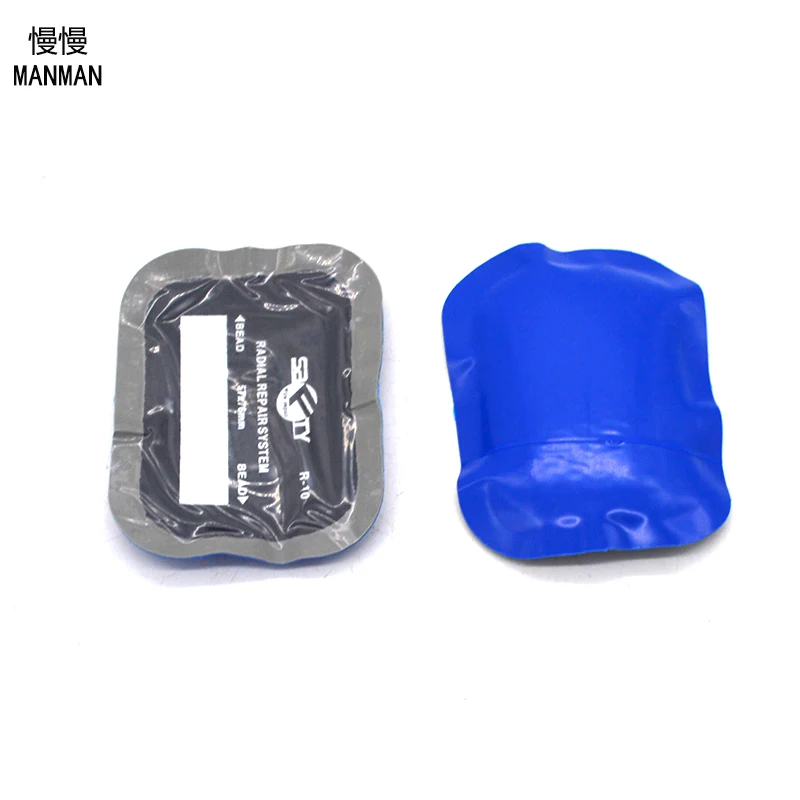
When can you patch a tire?
Patches are better than plugs for bigger holes, holes closer to but not the sidewall, and holes that aren’t completely straight. Be sure not to patch your tire if:
2. The safety of use
Both the US Tire Manufacturers Association (USTMA) and the Tire Industry Association (TIA) have their own safety standards for tire repairs. These standards must be upheld if the tires are to be considered safe after the repair. Doing a tire repair yourself is not advisable unless it is a very straightforward instance.
These standards must be upheld if the tires are to be considered safe after the repair. Doing a tire repair yourself is not advisable unless it is a very straightforward instance.
How safe is plugging a tire?
When driving, as your tires heat up, they will expand. A tire plug is made of a different rubber compound than tire rubber which means they expand at different rates. If you are repairing your tire yourself with a plug, you are solely relying on whether or not you properly plugged the hole. The plug needs to withhold the friction, expansion, and contraction when your tire heats up and cools off.
Plugging a tire can also trap air between the layers of the tread. When dipping the plug into the glue and inserting it in the hole, you are gluing it to every layer it passes through. As the tire heats up. The air between the layers expand and has nowhere to go causing the tread to separate from the rest of the tire.
How safe is patching a tire?
Radial patches are designed to repair radial tires which are most of the tires on the road today.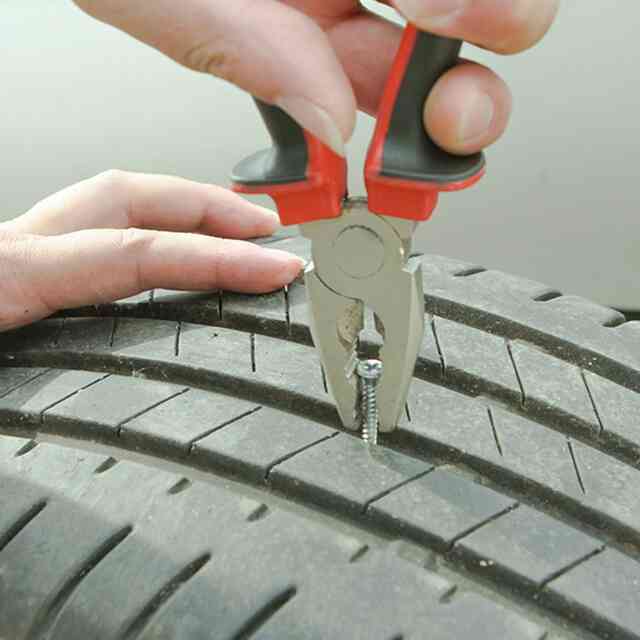 When your tire heats up, the patch “melts” into the tire. If the tire is patched, the patch prevents any air from inside the tire from escaping. It also allows any air trapped between the layers to escape out of the entrance hole in the outer tread area.
When your tire heats up, the patch “melts” into the tire. If the tire is patched, the patch prevents any air from inside the tire from escaping. It also allows any air trapped between the layers to escape out of the entrance hole in the outer tread area.
Though you do have to remove your tire to install the patch, it is safer to do so. Without properly inspecting the inside of the tire for hidden damage comes with risk. This is not to say that in some cases a plug wouldn’t serve as a temporary low-speed solution, but if a tire is punctured while you are not near an auto repair shop, a patch would be the safer option.
Radial Patch is the Winner!The Rubber Manufacturers Association (RMA), refers to a tire industry study that showed that nearly 88 percent of tire repairs are performed improperly. They also suggest that any tire repair done without removing the tire to inspect and determine the extent of the damage is an improper repair and could pose a safety hazard and could also affect the manufacturer’s warranty.
Overall, a radial patch is a safer, long-term solution. Plugs should be used as a temporary repair until you can have the tire taken off of the rim and inspected from the inside, then patched.
Always remember that any tire damage should be repaired immediately, even if your tire is still holding air but has a small leak. Small damages can lead to harmful accidents which can be easily avoided with a repaired tire. Your tires need to be maintained on a regular basis for damage, wear and tear, and lifespan. Whether you have a flat tire, a damaged tire, a small leak, or just need your tires checked, Luke’s Auto Service located on Grove Avenue in Verona, NJ is always here to help keep you safe and on the road!
Request Appointment Now
References/Image Sources:
tireoutlet.com
carcility.com
slime.com
txtire.com
RE-3
Rema Round Red Edge Patches For Car, Truck & Tractor
From $16. 95
95
RAD-115
Rema Radial Repair Patches for Truck, Tractor, Grader, Forklift
From $52.95
15-142
AA Round Patch-N-Plug for Radial/Bias Tire
From $24.95
2 reviewsRE-18
Rema #18 Intro. Tire Repair Kit
$249.95
X-X14605
Xtra-Seal 14-605 Tire Repair Cabinet for Truck Tire
$775.00
12
Rema 12 Truck Tire Repair Kit
$375.00
X-14-650
Xtra Seal Truck Tire Nail Hole Repair Kit - 14-650
$395. 00
00
RAD-110
Rema RAD-110 Radial Repair Patches for Car/LT (20/Box)
$39.95
1 reviewVL14-110
AAValueline HD Radial Tire Repair Patch
From $14.95
2 reviewsUP-3
Rema Universal Repair Unit
From $53.95
10-100HD
AA HD Round Radial Reinforced Universal Patches (100/Bag)
From $25.00
PN-20
Rema Bias-Ply Tire Repair Unit for Agricultural Tire
From $141. 08
08
RE-F0-P
Rema Round Red Edge Patches For Bicycle, Motorcycle, Car/LT
From $13.91
6 reviews5561
Rema 5561 MTR Cushion Gum (5.5 lbs)
$119.95
X-14-657
Xtra-Seal 14-657 Heavy-Duty Truck Toolbox Kit
$715.00
26A
Rema Car/LT New Tire Dealer Repair Cabinet 26A
$665.00
15-030
AA Minicomby Repair Units
From $19.95
53-356
AA Tire Repair Cabinet for Car and LT
$399. 95
95
12-410
Western Weld CRX Radial Tire Repair Patch
From $15.12
X-X14603
Xtra-Seal 14-603 Tire Repair Cabinet for Car/LT
$635.00
In this article we will try to look deeper inside the tire. It is worth noting that there you can find a lot of interesting things. Moreover, anyone who wants to repair tire damage should at least in general terms know the internal structure of the tire.
Tires according to the type of construction are divided into radial and diagonal. If you look at the pictures, you can immediately see that tire construction is critical during puncture repair.
When comparing both figures, it is immediately clear that the thickness of the sidewall of a radial tire is very thin and is the thinnest point on the tire. From the point of view of repairing punctures, this is also the most difficult area, since it lends itself to strong bending loads. The loads that fall on the sidewall are concentrated only on a small number of cords. And if some threads, moreover, are damaged by a puncture, then we must very accurately and completely replace them with new threads, which are part of the repair patch.
Radial tire sidewall repairs are the most time-consuming and complex of all tire repairs. Therefore, the following principles must always be kept in mind principles :
Principle 1: If the sidewall is punctured, the load-bearing cords are damaged and must be replaced with new ones during repairs.
Principle 2: The damaged area must first be cleaned and thoroughly repaired.
Principle 3: When applying a repair patch to a tire, the direction of the cord fibers in the patch must match the direction of the cord fibers in the tyre. Radial tires are patched from base to base, diagonal tires are patched to weave.
Radial tires are patched from base to base, diagonal tires are patched to weave.
If you always follow these two main principles, the repair of punctures will become easier and more understandable.
Radial tires
Consider repairing a radial tire. On fig. 1 shows its main parts. Repairs can be carried out in the area of the working surface, the shoulder and on the sidewalls.
In the area of the bead area, repairs are prohibited, since in this section of the tire all load-bearing cords are attached to the bead area threads. This area plays a key role. Damage to the supporting structure in this area leads to the gradual destruction of the tire and is irreversible. Tires that have deep damage in this area are recommended not to be used again.
Radial tire sidewall puncture repair
Sidewall punctures are very common as radial tires are very thin and vulnerable.
Often the sidewall of radial tires consists of only one layer of cords.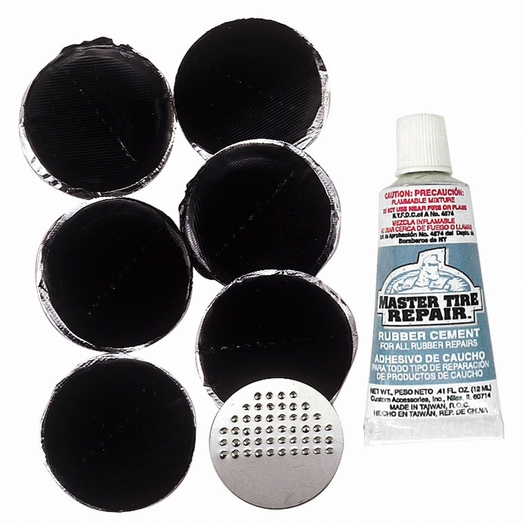 It is enough to inadvertently run into a curb, the edge of a pit on the road or tram tracks to get a break in the cords.
It is enough to inadvertently run into a curb, the edge of a pit on the road or tram tracks to get a break in the cords.
2, in addition to the main parts, also shows how the amount of damage on the sidewalls of a radial tire is estimated during its repair. These are two dimensions that are perpendicular to each other. Dimension A defines the width of the damage in the direction perpendicular to the cords. Dimension R means the length of the damage in the direction of the cords. Dimension A is very important because it indicates the number of cords damaged by the defect.
How to correctly determine the amount of damage? It is not determined immediately, but during the repair, when all damaged and weakened parts of the cord threads are removed from the place of damage. At the same time, it is important to observe the main rule: everything that is weakened or delaminated must be eliminated, so that only cord threads that are securely connected to rubber remain in the area of damage.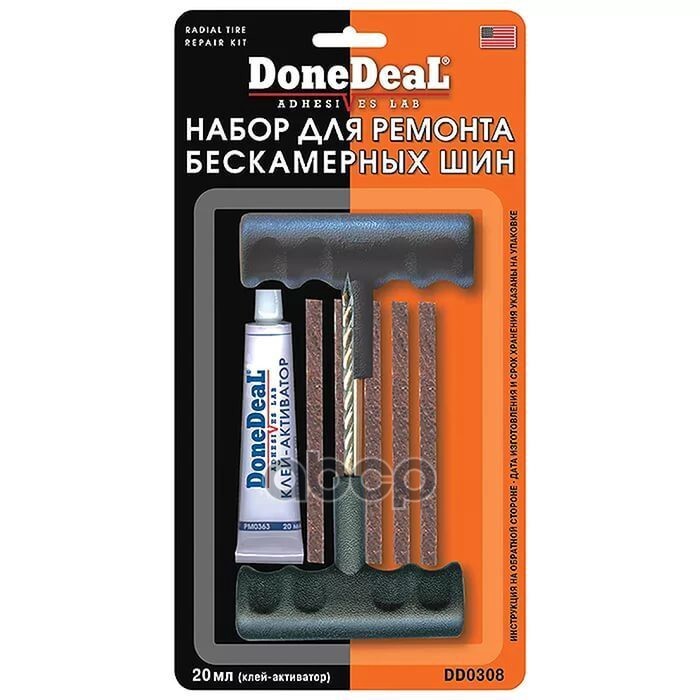 It often happens that a small, at first glance, damage after cleaning turns out to be a large defect. Also, during the repair process, it may turn out that the damage exceeds the allowable repair size in size and cannot be repaired. This is clearly seen in Fig. 3, 4, 5 and 6, when a large hole gradually appears in the area of damage.
It often happens that a small, at first glance, damage after cleaning turns out to be a large defect. Also, during the repair process, it may turn out that the damage exceeds the allowable repair size in size and cannot be repaired. This is clearly seen in Fig. 3, 4, 5 and 6, when a large hole gradually appears in the area of damage.
The shape of the ground puncture on the sidewalls of a radial tire must be funnel-shaped, going at a minimum angle of 120°, as shown in fig. 7.
Good sanding of the damaged area is the key to a successful repair. It is worth noting that this particular stage of repair is most often carried out improperly. It must always be remembered that incomplete elimination of damaged material leads to the appearance of surfaces rubbing against each other. As a result of friction, heat is generated, which contributes to the gradual destruction of the tire material.
After cleaning, the sanded area of damage is filled with a repair rubber compound, as shown in fig.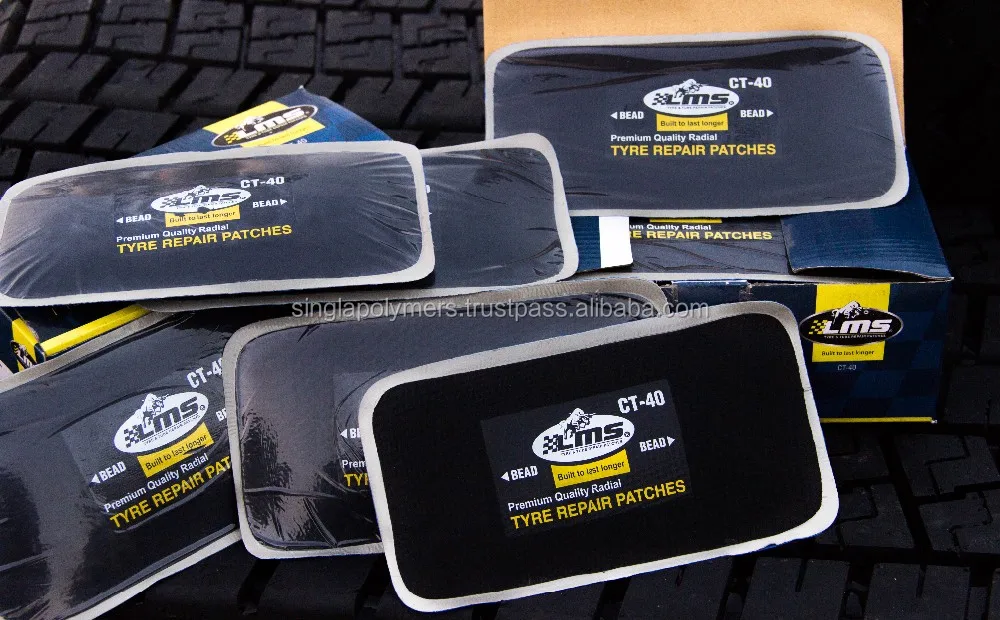 8.
8.
When gradually filling the hole with rubber mixture, it is necessary to ensure that the tire material is completely connected to the filler. It is equally important to fill the damaged area with rubber in such a way that no air remains between the layers.
The damage treated and filled in this way must then be vulcanized with a vulcanizing clamp. It is important to ensure that the curing area is under pressure during the entire process. The pressure must be evenly distributed over the entire area of injury. Since the sidewall of the tire has an uneven thickness and a rounded shape, uniform pressure is achieved by investing special aluminum inserts shaped like the sides of the tire. For smaller repairs, instead of an insert, a bag of aluminum chips can be used, as shown in fig. 9. In this case, the bag is shaped like a tire. The disadvantage of this method is the need to increase the vulcanization time by approximately one hour, since aluminum chips conduct heat worse than a solid aluminum insert.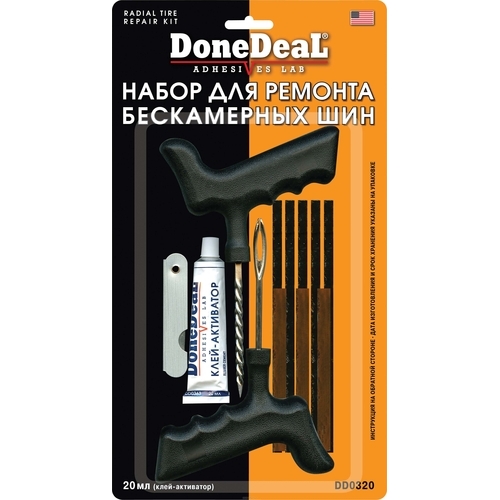
However, it is important to understand that vulcanization only achieves filling of the damaged area of the tire, but does not restore its load capacity. To restore the tire's ability to withstand loads, it is necessary to carry out the second stage of repair. At this stage, it is necessary to cold-glue the supporting cord repair patch in the area of tire damage (Fig. 10). The use of such a patch makes it possible to restore the distribution of loads between the broken cord threads.
Before applying the patch, thoroughly sand the damaged area and apply a coat of curing mortar. This solution makes it possible to completely adhere the patch to the tire, since in most cases cold vulcanization is carried out. The curing solution contains ultra-accelerators which, when in contact with the gauge bonding material of the patch, promote the conversion of monomer to polymer. That is, the process of chemical vulcanization occurs at ordinary temperature. The size of the repair patch is selected according to the manufacturer's table, depending on the size of the damage. In this case, the rule applies that the middle of the patch is placed in the center of the damage.
In this case, the rule applies that the middle of the patch is placed in the center of the damage.
Radial tire running surface puncture repair
In general, repairing the running surface area is similar to repairing sidewalls. However, the running surface area is not as thin as the sidewall, so there are a few things you need to be aware of when repairing this part of the tire. First of all, the funnel shape of the ground hole should have a smaller angle of approximately 90°. But it is still important to completely eliminate all parts of the weakened cord. In the area of the working surface, the tire is much more powerful, because in addition to the carcass cords, there is also a powerful reinforcing buffer belt. This must be taken into account when assessing the magnitude of damage (Fig. 11). After removing all loose cords and grinding to the desired funnel shape, it is necessary to measure the dimension A - the width of the carcass damage in the direction perpendicular to the cord.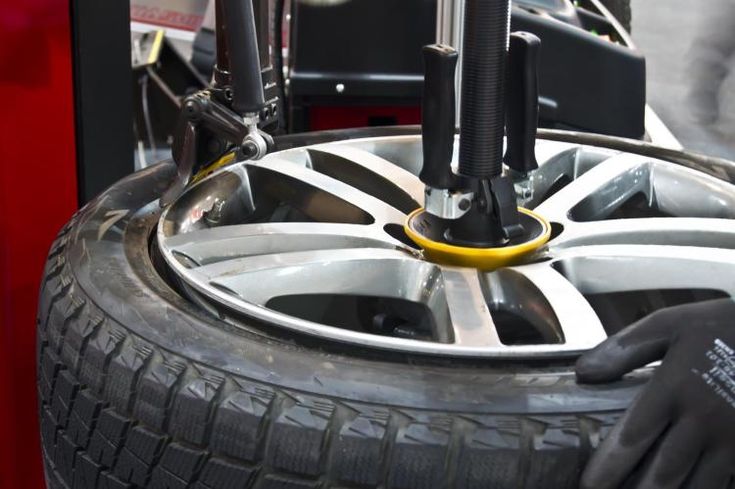 At the same time, dimension C is measured - the largest diameter of the damage to the reinforcement belt. Whichever of these two parameters is larger should be used to determine the damage width. Dimension R is used to determine the length of the damage. All measurements A, C and R are taken from the inside of the tire.
At the same time, dimension C is measured - the largest diameter of the damage to the reinforcement belt. Whichever of these two parameters is larger should be used to determine the damage width. Dimension R is used to determine the length of the damage. All measurements A, C and R are taken from the inside of the tire.
After this, the repair procedure is identical to repairing the tire sidewall. The sanded area is filled with a repair rubber mixture, as shown in Fig. 12. When gradually filling, it is necessary to ensure that the filler material is completely connected with the tire material. It is equally important to carry out the filling in such a way that no air remains between the layers.
The damage thus treated is then vulcanized using a clamp (fig. 13) and a repair patch is applied. The size of the repair patch is selected in accordance with the manufacturer's table, depending on the size of the damage.
Bias tires
Bias tires are inherently more powerful and less vulnerable than radial tires.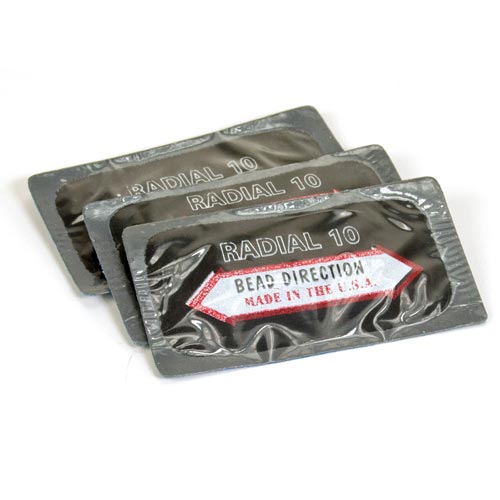 Bias tires are used less and less today. Most often they are installed on agricultural and loading equipment. Since these tires work in harsh conditions, they are more likely to have punctures. Bias tires are easier to repair than radial tires because they have thicker sidewalls. The cutting and grinding angles of the damaged areas on the main parts of the tire are shown in fig. 14. On the sidewalls - 90°, and in the area of the working surface - 60°. As with radial tyres, it is forbidden to repair the bead area of bias tyres.
Bias tires are used less and less today. Most often they are installed on agricultural and loading equipment. Since these tires work in harsh conditions, they are more likely to have punctures. Bias tires are easier to repair than radial tires because they have thicker sidewalls. The cutting and grinding angles of the damaged areas on the main parts of the tire are shown in fig. 14. On the sidewalls - 90°, and in the area of the working surface - 60°. As with radial tyres, it is forbidden to repair the bead area of bias tyres.
Repair of sidewall and running surface punctures on bias tires
The procedure for repairing damaged cords and rubber material is the same as the repair procedure described for radial tires. But in this case, it is very important that no unremoved residues remain in the area of damage. The size of the repair patch is determined by the size of the damage to the cord threads C (Fig. 15) and is selected according to the manufacturer's table.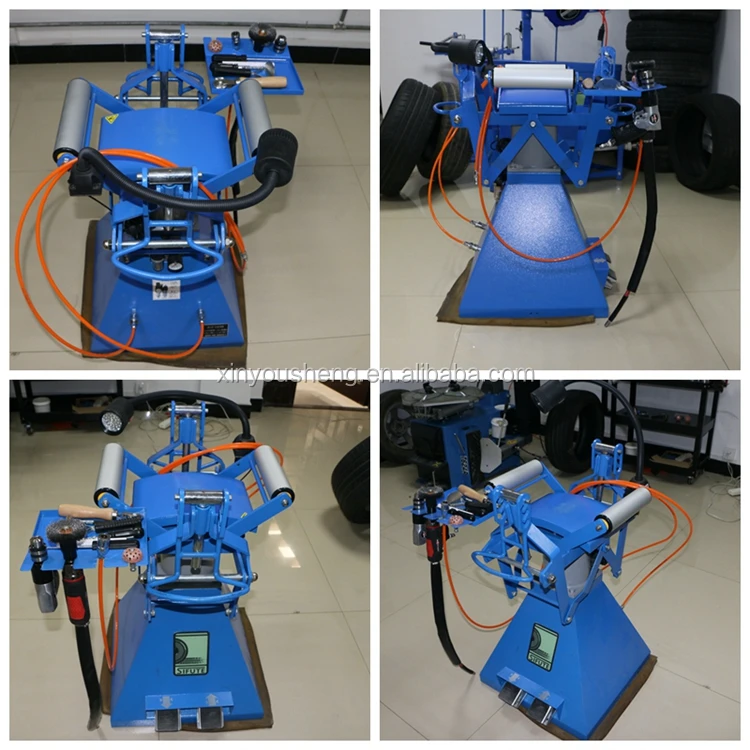 The method of filling the damage with a repair mixture is shown in Fig. 16. Vulcanization is carried out using a vulcanization clamp. Diagonal patches are also used as radial patches. The main requirement: the middle of the patch should be placed in the middle of the damage (Fig. 17, 18).
The method of filling the damage with a repair mixture is shown in Fig. 16. Vulcanization is carried out using a vulcanization clamp. Diagonal patches are also used as radial patches. The main requirement: the middle of the patch should be placed in the middle of the damage (Fig. 17, 18).
Bias patches are larger than radial patches. Therefore, diagonal patches intended for repairing sidewalls should have a “notch” with a radius of the side zone in the area of the bead zone, as shown in Fig. 18.
Tire puncture repair, based on this article, may seem quite complicated. In fact, this is not at all the case. It is sufficient to observe several basic rules :
1. All damaged and delaminated cords and rubber material must be removed at the puncture site.
2. The puncture should be ground into a funnel shape with the following angles:
- Radial sidewalls - 120°
- Radial worktop - 90°
- Diagonal sidewalls - 90°
- Diagonal worktop - 60°.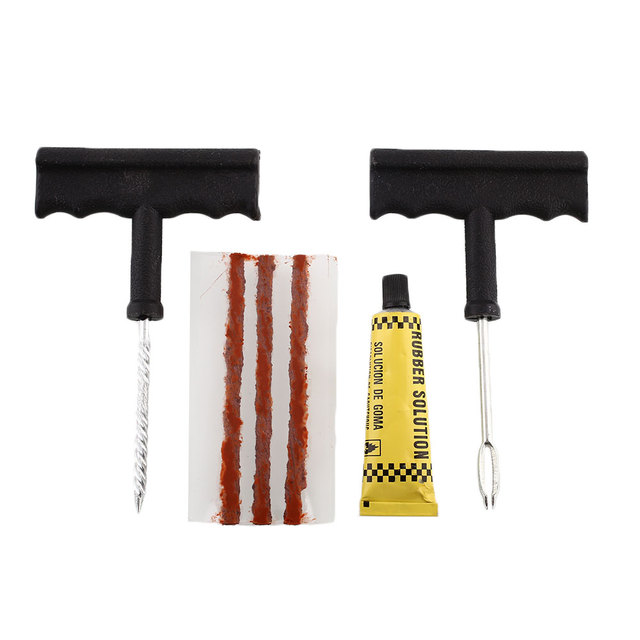
3. The defect must be filled with a quality rubber compound.
There must be no air between the layers.
4. Vulcanize the filling area.
5. According to the dimensions of the puncture, after grinding it, select the repair patch of the required size according to the manufacturer's table.
6. Cold bond a quality repair patch to the damaged area using a quality curing mortar. The center of the damage must match the center of the patch.
7. Finish and check the quality of work. It is important to remember that each manufacturer of repair materials has its own developed technological procedure for repairing tire punctures and its own tables, according to which the appropriate repair patches should be selected.
Thus, there are quite a lot of technologies and materials for high-quality puncture repair. In conclusion, this article is not meant to be a textbook on tire repair, as we have covered only the most basic types of puncture repairs here to give the reader a general idea of them.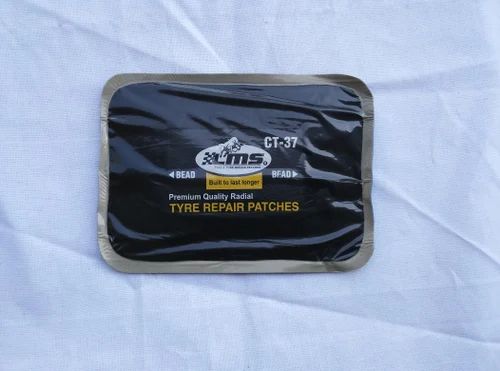 In this article, we have omitted the topic of tire shoulder puncture repair as it is similar to tire sidewall repair. Also, we did not consider how to repair minor damage to the bead area or the fact that when repairs are made in the area of the working surface, it is necessary to cut new tread tracks. But we will cover these topics in the future.
In this article, we have omitted the topic of tire shoulder puncture repair as it is similar to tire sidewall repair. Also, we did not consider how to repair minor damage to the bead area or the fact that when repairs are made in the area of the working surface, it is necessary to cut new tread tracks. But we will cover these topics in the future.
Pavel Ferdus
In the last issue we wrote about the repair of minor tire defects. The author of the article - Pavel Ferdus, manufacturer of tire repair materials of the Czech company Ferdus - spoke in detail about the tire repair history of from the moment the first tire appeared to the present day, trends in this area and forecasts of how the tire repair business will develop in the future. In particular, he covered in detail the repair of such minor damage as tire punctures. In this issue, we will continue the theme, only this time the focus will be more serious damage, namely tire breakdowns.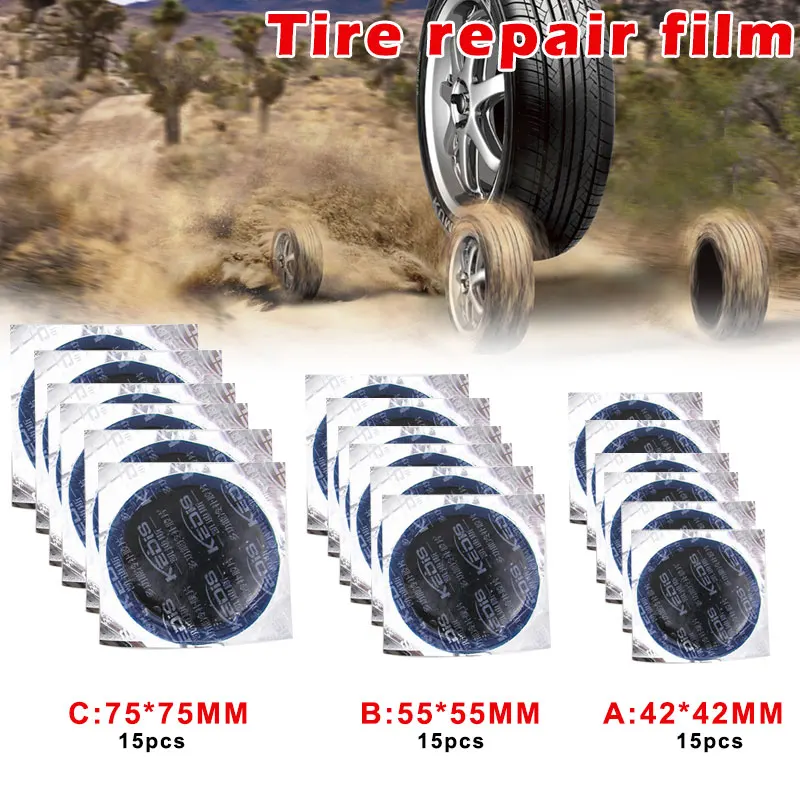 At the same time, it will not be superfluous to look into the past again in order to predict the trends of the future.
At the same time, it will not be superfluous to look into the past again in order to predict the trends of the future.
The first tires and the first punctures
Historically, tires have always – from their inception to the present day – been easily damaged. Even despite the fact that the first tires were quite thick, there were always a lot of various sharp objects on the roads, collisions with which would certainly end in serious tire damage - breakdowns.
Over time, both the car and tires have improved. Designers have always been interested in the optimal ratio of their strength and weight, but these requirements often contradict each other. On the one hand, an acceptable margin of safety and resistance to defects was necessary, and on the other hand, it was necessary that they copy the road surface with extreme precision.
The first tires were bias-ply and their surface was resilient. In bias-ply tires, the cords in the carcass plies run diagonally from bead to bead.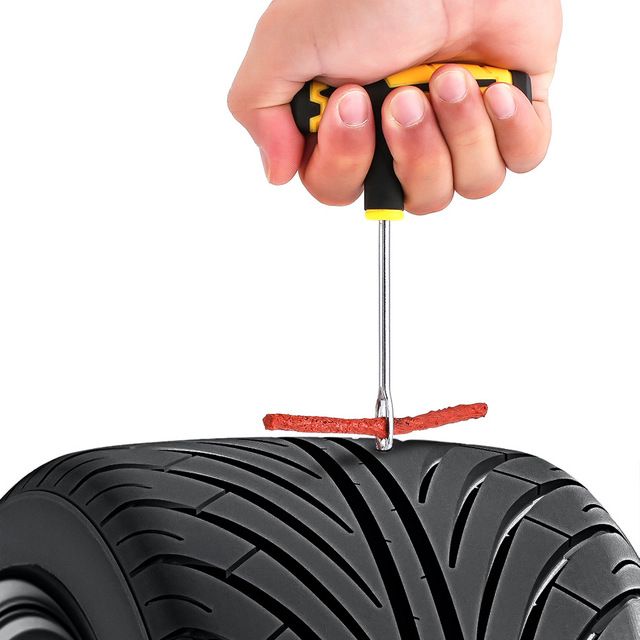 Elasticity must also be maintained for the repair patch, as the main repair material for tire breakdowns. The repair patch for bias tires must be elastic and have the ability to change its size depending on the load.
Elasticity must also be maintained for the repair patch, as the main repair material for tire breakdowns. The repair patch for bias tires must be elastic and have the ability to change its size depending on the load.
At one time, the bias tire was the most popular among car enthusiasts due to its elasticity and ability to "soften" surface irregularities. And yet, it is quite heavy, voluminous and expensive.
In the 60s of the last century, bias tires replaced radial tires, which were distinguished by elasticity. For radial tires, the cords in the carcass plies do not cross like bias tires, but have a radial arrangement, i.e. directed from side to side. The tread of a radial tire is backed by a shock absorber that looks like a rigid ring. Accordingly, the repair material - a patch for repairing holes in radial tires, must be reliable under stress and withstand severe loads. At the same time, such a repair patch must be very thin, flexible and not lose its properties when heated while driving. It is also important that it be light in weight so as not to cause an overall imbalance in a light radial tire.
It is also important that it be light in weight so as not to cause an overall imbalance in a light radial tire.
Repair patches as a base
Fungi, cords, pegs and sealing solutions can be used to repair minor damage. However, to repair more serious damage - breakdowns, a repair patch with a cord thread is needed. A puncture is considered to be a serious damage to the tire carcass if its diameter exceeds 6-8 mm and the carcass carrier cords are torn. In the course of repairing such damage, it is necessary to restore the integrity of the cord threads lost due to a break. To do this, a repair patch is applied to the breakdown site. It is very important that the damaged cord threads are completely covered with new patch threads. That is, the new cords of the patch should be tightly attached to the ends of the damaged threads, following their direction.
Bias Repair Patches
Bias Repair Patches are used to repair bias tire punctures.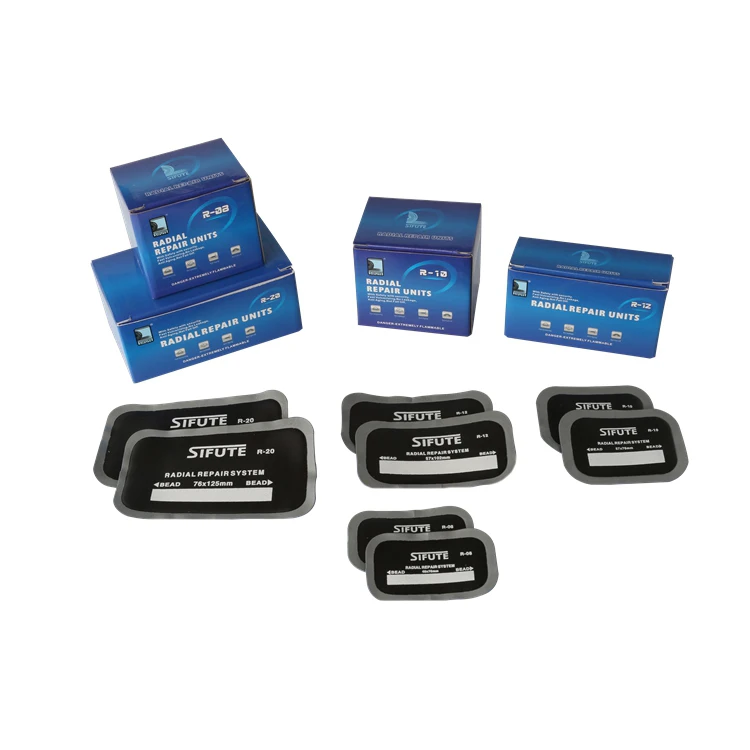 A feature of diagonal tires is that the cords are located crosswise, mainly at an angle of 90º. The cords of large tires for agricultural machinery are located at a large angle - 120º. In a similar way, the cord threads are located at the repair patches, which are superimposed on the damaged areas of the punctured tires. Patches for regular tires have 8 ply cords, for large tires - 16 plies.
A feature of diagonal tires is that the cords are located crosswise, mainly at an angle of 90º. The cords of large tires for agricultural machinery are located at a large angle - 120º. In a similar way, the cord threads are located at the repair patches, which are superimposed on the damaged areas of the punctured tires. Patches for regular tires have 8 ply cords, for large tires - 16 plies.
Bias patches are used for repairs in the shoulder (fig. 1) or side (fig. 2) area of the tread. Bias constructions are currently used in the production of tires for agricultural machinery and trucks.
Radial Tire Repair Patches
Radial Tire Repair Patches are used to repair radial tire punctures. In a radial tire, the cord threads of the carcass have a radial arrangement. In the same way, load-bearing cords are made for repair patches for radial tires. They are used to repair serious damage - breakdowns. In this case, a repair patch for the radial structure is placed in the tire, thus restoring the integrity of the damaged cords in the tire carcass. Since today all sizes of radial tires are repairable, there are several types of patches for radial tires:
Since today all sizes of radial tires are repairable, there are several types of patches for radial tires:
If a radial tire repair patch is used to repair a puncture, it is very important that no deformation occurs at the point of damage. First of all, it is necessary to avoid the occurrence of swelling. Although, to be honest, it will never be possible to completely avoid bloating. Firstly, this is impossible due to the fact that the tire material is always slightly stretched at the point of breakdown. Moreover, after thermal exposure and subsequent vulcanization, it will stretch even more. Secondly, the slight bulge is due to the fact that the repair patch cords cannot be directly connected to the tire cords, and the flexible rubberized connecting layer between them provokes slippage and leads to a slight shear. However, when using patches with a carefully thought out design and the right material, bloating can be significantly reduced.
However, when using patches with a carefully thought out design and the right material, bloating can be significantly reduced.
Standard patches for radial tires
Viscose or polyester cords are used to make standard patches. To increase the reliability of these patches, several layers of these threads are used during their manufacture. Regular patches have four layers, while larger patches have eight. These layers have a gradation according to the size and are interconnected by rubber. When the tire is loaded, the force from the tire carcass is gradually transferred by sliding stress to the individual layers of the patch, so there is practically no stress concentration at the ends of the patch and the load on the patch is distributed along its entire length. This is a significant advantage of standard radial tire patches, which is why they are constantly in high demand.
Among the disadvantages of such patches is greater elasticity, which is caused by the movement of forces between the individual layers and leads to more swelling on the side of the tire.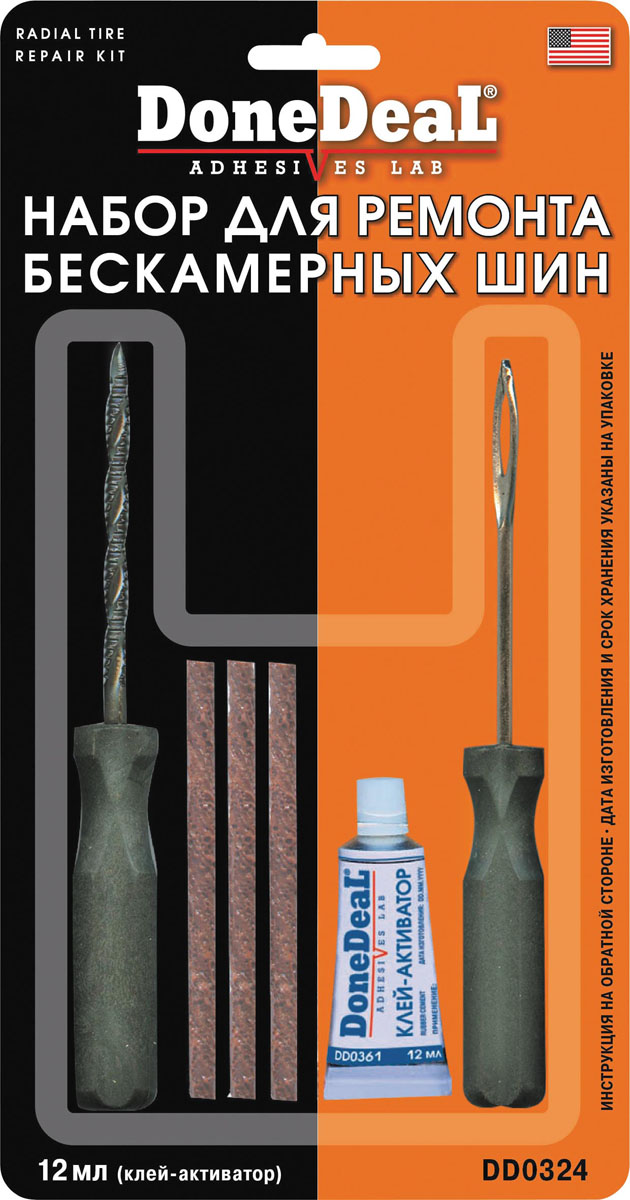
Steel Cord Radial Tire Patches
Steel cords are also used to make truck tire patches, which provide higher reliability and lower elasticity.
Their advantage is that they are more reliable and can only be in one or two layers. But there is also a reverse side of the coin, since at the junction of new and damaged cord threads there is a high concentration of stress on the ends of the patches. Therefore, quality patches with steel cords have an additional inner lining textile layer, which helps to more evenly distribute the impact of forces. Another advantage of these patches is the slight bulge when they are applied to the side of the tire.
But there is also a significant drawback - poor flexibility. Therefore, steel cord patches for radial tires are not suitable for repairing punctures in low profile tires.
Aramid patches for radial tires
Similar results as with steel cord patches for radial tires can be achieved by using patches with aramid cords.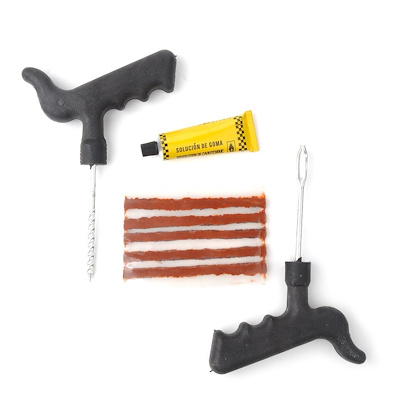 This material is as strong and reliable as steel, but much lighter. In addition, the individual fibers in aramid yarns are much thinner compared to steel wire. Therefore, patches with aramid cord have much more flexibility.
This material is as strong and reliable as steel, but much lighter. In addition, the individual fibers in aramid yarns are much thinner compared to steel wire. Therefore, patches with aramid cord have much more flexibility.
However, aramid cord patches have the same end stress concentration problem as steel cord patches. Therefore, it is necessary to place another layer in such patches, which will distribute the stress along the entire length. From this, of course, the thickness of the patch will increase and its initial advantage will be lost. But still, even in this version, aramid patches are quite flexible, so they are great for repairing the sides of low profile tires. The disadvantage of such patches is, of course, the high cost.
Crossbelt patches
These patches are the newest product on the market and are distinguished by the fact that they significantly reduce the occurrence of blisters during repairs on the side of the tire (fig. 6).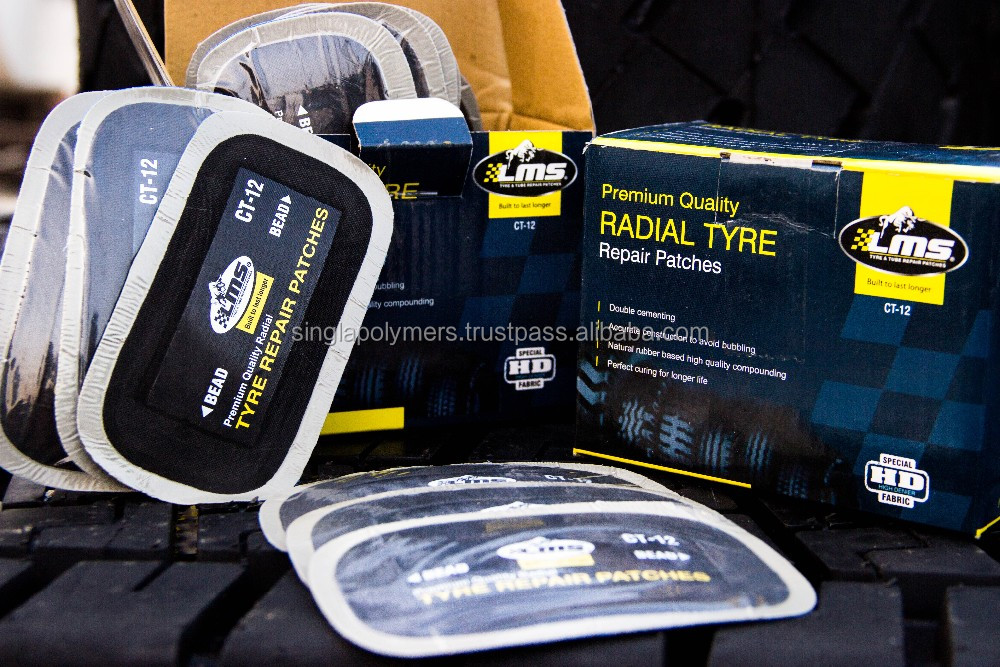 The main material for the manufacture of patches with a transverse belt is high-quality polyester, distributed in several gradation layers, as in standard pads. Therefore, there is no need for a special layer for stress distribution.
The main material for the manufacture of patches with a transverse belt is high-quality polyester, distributed in several gradation layers, as in standard pads. Therefore, there is no need for a special layer for stress distribution.
The good resilience and effect of steel cord patches is achieved by using a narrow transverse belt. Due to the shape and material of the patches, which are concentrated exactly where it is needed, the cross-belt patches have increased flexibility and reliability. Therefore, they are excellent for more loaded low profile tires. And, undoubtedly, a significant advantage of patches with a transverse belt is their lower cost than patches with steel and aramid cords.
The development of breach repair
In the 60s and 70s of the last century, a great agreement was finally reached on how to repair breaches. At that time, the cold vulcanization method was significantly improved and repair patches began to be produced on an industrial basis by large enterprises. Large manufacturers were able to accurately determine the technological foundations of repair, after which they summarized them in basic rules and tables.
Large manufacturers were able to accurately determine the technological foundations of repair, after which they summarized them in basic rules and tables.
According to these principles, the repair of tire punctures is carried out in various ways today. Therefore, manufacturers can guarantee that if the master follows the established rules, he will be able to repair most damage. In this case, the repair will be quite successful.
In the past, when tires were expensive and manual work was cheap, there was an opinion that puncture repairs were always successful. Currently, it's the other way around. Before repair, it is already necessary to calculate the residual value of the damaged tire and the cost of the repair.
Owners of personal vehicles sometimes find it cheaper to buy new tires than to repair a major damage. Moreover, the requirements for driving comfort are increasing, which requires stability and increased tire balancing from the car. But since the tire loses its original qualities after repair, this method of repairing holes is less and less suitable for passenger car tires and is gradually moving into the category of truck, tractor, agricultural and special tires.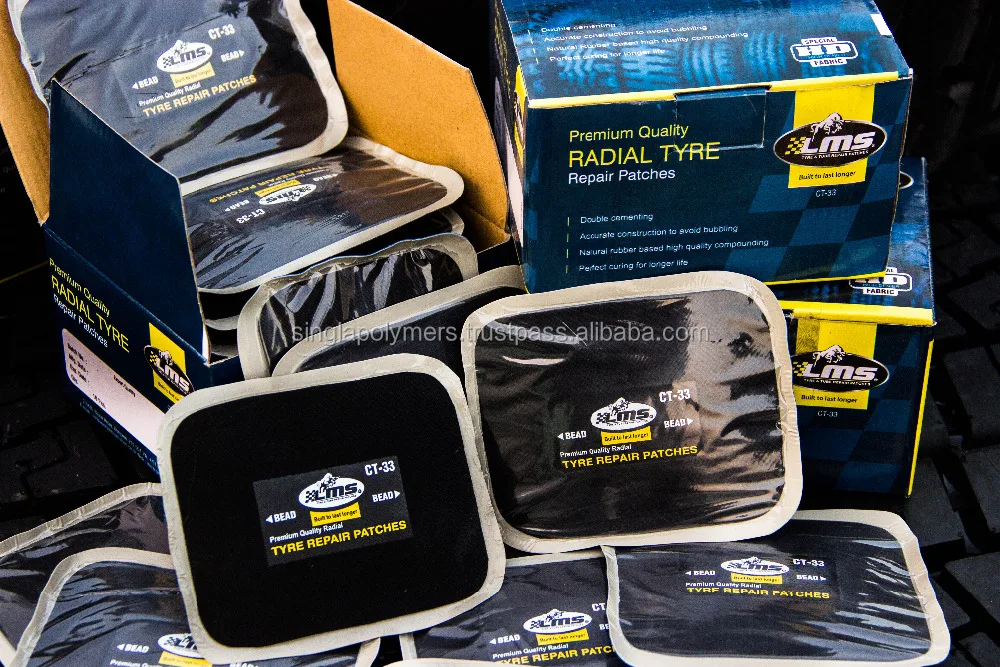 This trend will become more pronounced in the future.
This trend will become more pronounced in the future.
Nevertheless, today we can safely say that modern hole repair technologies are well developed and in most cases convenient. On the other hand, there are no other more convenient alternatives on the horizon. Therefore, in the future, only materials will be improved, especially repair patches, and the vulcanization system.
Repair does not end with patches alone
In this article, we have described in detail the types of patches for repairing breakdowns - cord patches, which restore the integrity of damaged cord threads in the tire carcass. But to be honest, the application of a repair patch is only one part of the technology for repairing breakdowns. Moreover, this is the least problematic way to repair damage.
Another, more complex method, involves welding the tire at the point of breakdown. Performing such repairs requires a higher level of professionalism, skills and decency from the master.